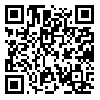BibTeX | RIS | EndNote | Medlars | ProCite | Reference Manager | RefWorks
Send citation to:
URL: http://rjms.iums.ac.ir/article-1-736-en.html
Background & Aim: One of the most important points in the pharmacology of Anesthetic drugs is the their effect on the depth anesthesia and for its assessment recently an important marker BIS is used. In this study we evaluated the effect of three drugs namely Halothane, Isoflurane and Sevoflurane on depth of anesthesia using BIS monitoring. Patients and Methods: This study was performed on 114 patients in ASA-2, who were candidates for cochlear implantation surgery in Hazrat-e Rasool Akram Hospital. The patients were divided in three groups randomly. In the first group who were 36 patients, Halothan was administered for induction. In second group there were 24 patients, Isoflurane was administered and in third group with 54 patients Sevoflurane was administered. For close monitoring of depth of anesthesia BIS technique was used. Time needed for inducing general anesthesia during laryngoscopy, intubation, blood pressure and heart rate were recorded by BIS in collecting data sheet. The study was a randomized clinical trial and tests used for data analysis were One way Anova and Tukey tests. Results: BIS values for patients anesthetized with halothane were 42±1.6 and 42.7±1.5(laryngoscopy and intubation, respectively), with isoflurane were 43±0.3 and 42.1±3.7(laryngoscopy and intubation, respectively) and for sevoflurane group the BIS valves were 42.1±1.3 and 42.4±1.3(laryngoscopy and intubation respectively)(Pv<0.0001). Conclusion: Analysis of data using one way ANOVA and Tukey test showed that there is no difference in regard to the effect on depth of anesthesia and vital signs between three groups but with sevoflurane time was decreased for achieving general anesthesia.





